 BBC News
BBC NewsBorrowing was £17.4bn last month, the second highest October figure since monthly records began in 1993.

Diana Taylor graduated with an M.F.A Painting from the Slade School of Fine Art in 2010. She studied B.A (Hons) Fine Art at Bath Spa University College and graduated in 1999. In 2011 she was awarded the Abbey Scholarship in Painting at the British School at Rome. Residencies in 2011 and 2012 include Centre of Contemporary Arts, Andratx, Mallorca and East London Printmakers. A sense of journey, both physically and through memory, and the relation this has with mass-produced images, which travel our own consciousness, are central to her practice. We caught up with her at her new exhibition ‘Borrowed Time’. at Bobinska Brownlee New River
I really love the new stuff. How did these paintings come about?
The new paintings began with Gustav Dore’s illustrations of Dante’s Divine Comedy. The illustrations were made in the 19th century as woodblock prints and the Divine Comedy was written in the 14th century. The book I chose the images from was published in the 1970s and my manipulations from analogue to digital were made this year so there’s oscillation between temporalities within my work. I selected small areas of several illustrations and manipulated them within Photoshop by cropping, enlarging and lowering the resolution.
I also turned the document into bit map format to screen-print them. I always enlarge the images in screen-printing too so the image is reduced in quality even further. So, what was a woodblock print has gone through a digital process into a mechanical method of screen-printing and that’s how the paintings usually begin. There are varying levels of detail and zooming in for those images.
So there’s a digital element and then you set to work as a painter?
I then began painting imagery from my various illustrated books of plants and botanical illustrations some of which were important to Morris’s archive- a 16th-century Gerard’s Herbal. From my PhD research on William Morris I’ve become increasingly interested in the botanical illustrations that he was using, but I also have a real love for early print and that’s why I refer to it often within my work. My love of gardening and my interest in plants as therapeutic and medicinal has steered these new works.
However, there’s also a more serious concern with climate change, and the idea of plants growing and becoming threatened, or in decline, started mirroring my painting process which is one of building up and breaking down the image. These new paintings in my solo show at Bobinska Brownlee gallery, ‘Borrowed Time’, therefore, are about the things that I am thinking about, looking at and doing in my everyday life- which is what my paintings are generally about anyway. The title refers to concerns in a climate crisis and also to my method of appropriation- borrowing images which already exist, to create new works.
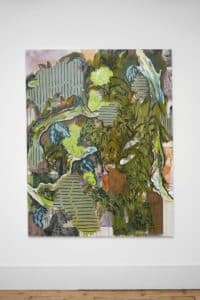
Has your method of composition been relatively fixed and stable over your career, or is that evolving?
My method of composition tends to change however over the past 10 years I’d say I’ve been very much focused on using a portrait format and working on a similar size and often it’s because I want to have some kind of composition which involves cascading, a kind of cascade down the painting and alludes to the idea something falling and things falling apart. The composition is not fixed. However, I always use fragments within my work and I’m interested in the composition as appearing unfinished.
There’s something about the tension between something that’s finished and unfinished, that interests me, so the work oscillates between many dichotomies such as fast and slow painting, graphic and gesture, old and new references, art and craft et cetera yet these binaries are always symbiotic which is why I’ve converged them because they need to be together.
Was it always art for you? Did you ever consider some other path in life?
Yes, it was always painting for me. My granny was a painter and I always loved drawing and painting there was never any question that I wanted to do something else, although at one stage I wanted to be an air hostess just because I love travelling so much. But I realised I could travel and do my painting and I could be an artist, and make money from selling my work and teaching, which is something I also enjoy.
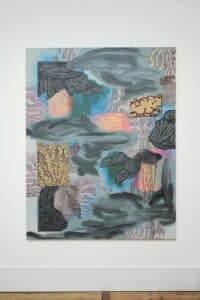
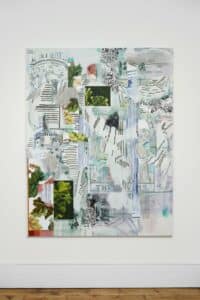
Did you have any mentor in art?
I had several brilliant art teachers throughout my education who have inspired me and taught me so much. I think that’s why I love teaching so much because I want to be able to give back what I also experienced in my educational journey.
Who are your heroes in art history who have helped you on your journey?
I think my heroes in art history include Bernini whose work blew me away in Rome. But, in modern history, I love Sigma Polke, Robert Rauschenberg, Lee Krasner, Eduardo Paolozzi, and many others. Contemporary painters I love are Amy Sillman, (I love her writing too), as well as Michael Williams, Charlene Von Heyl, Christopher Wool amongst a load of others.
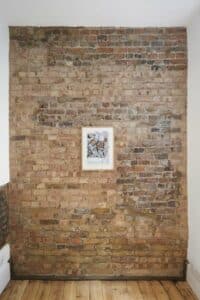

What are your tips for young artists about the business side?
I’d say for young artists it’s just important to stay focused on being true to yourself and not getting caught up in any trends. You kind of have to be thick-skinned and resilient as an artist and to stay resolute. I find a strong daily meditation practice has helped me to stay resilient and grounded as it can be so difficult to persevere when it seems at times like not much is happening in your career.
Galleries seem to take large percentages from artists – is that something you think will change over time?
I don’t think the 50% commission is likely to change although I’ve no idea really on this aspect of the art world- as long as the Gallery can continue to put on ambitious exhibitions and bring their collectors to the shows then it’s a really good way for an artist to get exposure.
What’s your experience of art fairs?
As a visitor to art fairs, I find them quite overwhelming as there’s so much work to see but I do visit some of the bigger fairs such as Frieze so they’re understandably overwhelming but it’s a good way to get an idea of what’s going on globally in the art world. That said it’s an odd way of looking at art because you’re hardly even giving the work any time at all. It’s just a glance and then moving on to the next thing.
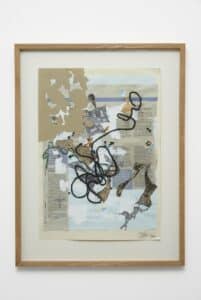
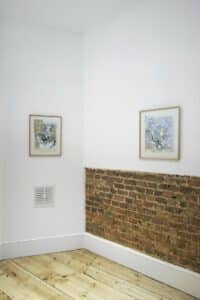
Has the conversation around NFTs affected you at all, or do you think that was just a fad?
I’m not that interested in NFTs. Although I think they could be good for some artists I have zero interest in turning my work into an NFT. I think something is lost in the reproduction of a painting or work that has a haptic quality like my textiles- it’s the aura that Walter Benjamin spoke of, so an NFT for me is kind of dead and it kills the work of the hand. However, I’m sure there’s some really interesting work out there that I haven’t seen so we’ll see how far it goes.
Borrowed Time ran from 18th April-5th June at Bobinska Brownlee New River. For more information go to: www.dianataylor.co.uk